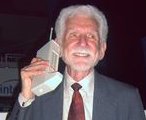Sun is trying to replace the wires between computer chips with laser beams to eliminating a bottleneck. For decades, the semiconductor industry has broken silicon wafers into smaller chips to improve manufacturing yields. From the article:
Sun Microsystems is trying to do for computing what all the king’s horses and men failed to do for Humpty Dumpty. For decades, the semiconductor industry has broken silicon wafers into smaller chips to improve manufacturing yields.
Now Sun has found a way to reconnect the chips so they can communicate with each other at such high speeds that computer designers can build a new generation of computers that are faster, more energy-efficient and more compact.
The computer maker, which is based in Santa Clara, Calif., plans to announce on Monday that it has received a $44 million contract from the Pentagon to explore the high-risk idea of replacing the wires between computer chips with laser beams.
I’m not an expert in electricity or electronics but on paper a laser should move as fast as energy. I really hope this will to improve speed :) Each chip would be able to communicate directly with every other chip via a beam of laser that could carry billions of bits of data a second.

